For years, the idea of a hydrogen fuel-cell vehicle has often been referred to as the car of the future. Well, it seems that the future has finally arrived. At the 2014 Consumer Electronics Show in Las Vegas, NV, Toyota made headlines by unveiling their fuel-cell vehicle to the public. Are you prepared to embrace this revolutionary change in automotive technology?
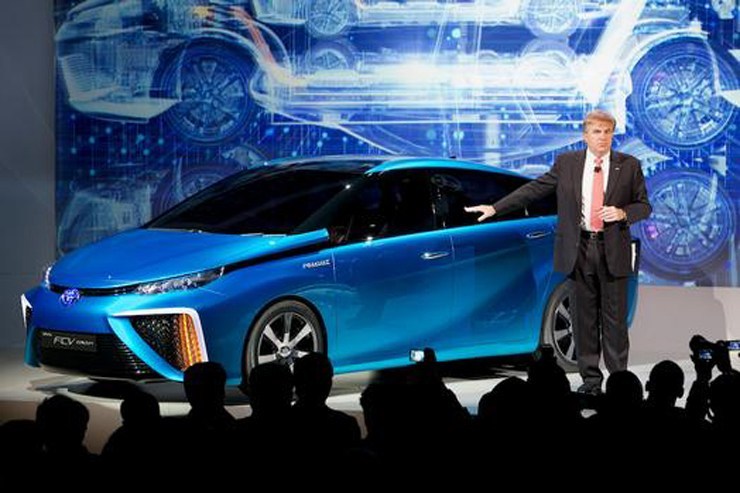
This sleek blue four-door sedan gives us a glimpse into what a hydrogen fuel-cell vehicle might look like.
During the 2014 CES showcase, two hydrogen fuel-cell vehicles took center stage. One was the FCV concept, showcasing a radiant blue, mid-sized four-door sedan. The other was a camouflaged prototype that had been extensively tested across North America over the past year. According to Toyota, this prototype delivers an impressive driving range of around 300 miles, a zero-to-sixty acceleration time of approximately 10 seconds, and emits only water vapor. Refueling its hydrogen tanks takes between three to five minutes.
“We’re not reinventing the wheel here; rather, we’re focusing on improving everything necessary to ensure those wheels keep turning,†stated Bob Carter, senior vice president of automotive operations for Toyota Motor Sales (TMS), U.S.A. Inc., during the event's opening. “Fuel cell electric vehicles are closer to mass production than most people realize, and their adoption could happen faster than anyone anticipated.â€
Hydrogen combines seamlessly with oxygen to produce water and electricity, creating a clean energy source with no harmful emissions. Despite its potential, many experts once dismissed hydrogen-powered electric vehicles as impractical. However, Toyota is confident they’ve overcome significant obstacles—primarily reducing production costs to make these vehicles accessible to a broader audience while simultaneously accelerating the development of a reliable hydrogen refueling infrastructure.
This unveiling marks two decades of relentless research and development efforts by Toyota, who invested heavily in refining fuel cells to lower manufacturing expenses. Over the last 11 years, numerous prototypes have clocked millions of miles across North America. As a result, the powertrain and fuel cells for the upcoming 2015 model have seen a staggering 95% decrease in production costs compared to the initial prototype back in 2002.
The FCV concept represents a remarkable engineering feat, with substantial reductions in both size and weight of the powertrain system since 2002. Toyota claims the car will boast a power output exceeding 100kW, enough to potentially supply electricity to an average household for up to a week.
“Undoubtedly, the success of this technology hinges less on the brilliance of the car itself and more on the overall ownership experience,†noted Carter. “While cost is important, convenience plays an equally critical role.â€

Toyota has unveiled its Hydrogen fuel-cell prototype, billing it as the car of the future. Do you find this vision compelling?
One major concern surrounding any new fuel type revolves around the accessibility of refueling stations. Initially, Toyota plans to launch the vehicle in California and is collaborating with the University of California Irvine’s Advanced Power and Energy Program (APEP) to identify ideal locations for new hydrogen fueling stations.
APEP utilized various datasets such as vehicle ownership statistics from R.L. Polk regarding hybrids and electric cars, traffic patterns, population density, and more to develop a predictive model. This model assumed that drivers would prefer refueling stations located within a six-minute drive. Based on this analysis, APEP concluded that 68 station sites would suffice for the San Francisco Bay area, Silicon Valley, along with Los Angeles, Orange, and San Diego counties. These stations could cater to an estimated 10,000 fuel-cell vehicles.
With sufficient funding already secured, Toyota remains optimistic about constructing the necessary infrastructure in due time.
What are your thoughts? Do you genuinely believe that fuel-cell vehicles represent the future of transportation?
Related Posts
As we stand on the brink of this technological advancement, it's essential to consider whether hydrogen fuel-cell vehicles truly represent the next big leap forward in sustainable mobility. While they promise zero-emission travel and quick refueling times, several hurdles remain, including high initial costs and limited infrastructure. Nevertheless, Toyota's commitment suggests they're serious about making this vision a reality.
In conclusion, the future of hydrogen fuel-cell vehicles looks promising, but only time will tell if they'll become the dominant force in eco-friendly transportation. Will you be among the early adopters? Let us know your thoughts below!
MCV-03W Series Direction Valves
Mcv-03W Series Direction Valves,Stacked Check Valve,Hydraulic Stacked Check Valve,Stacked Check Valve Hydraulic
Shanghai Jinhai Hydraulic Co.,Ltd , https://www.shanghaijinhai.com
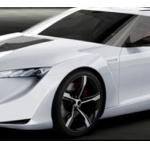 Toyota Concept Cars We Would Like To See In Production
Toyota Concept Cars We Would Like To See In Production
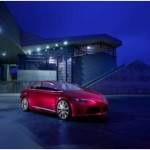 Cool 2012 Toyota Concept Vehicles
Cool 2012 Toyota Concept Vehicles
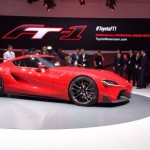 Toyota FT-1 Concept Debuts – What You Need To Know
Toyota FT-1 Concept Debuts – What You Need To Know
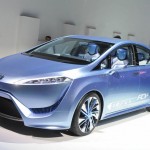 Toyota Fuel Cell Vehicle Stops in San Francisco – Is Hydrogen A Viable Fuel Source?
Toyota Fuel Cell Vehicle Stops in San Francisco – Is Hydrogen A Viable Fuel Source?
 Two Year Maintenance Plans Come To Toyota Vehicles
Two Year Maintenance Plans Come To Toyota Vehicles